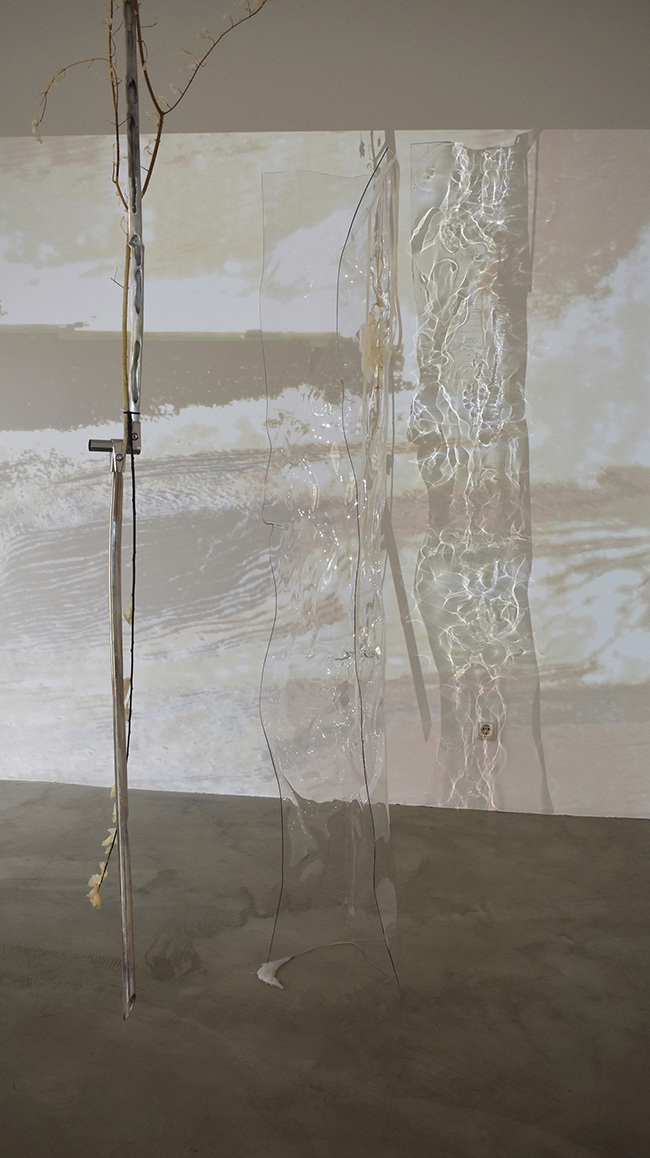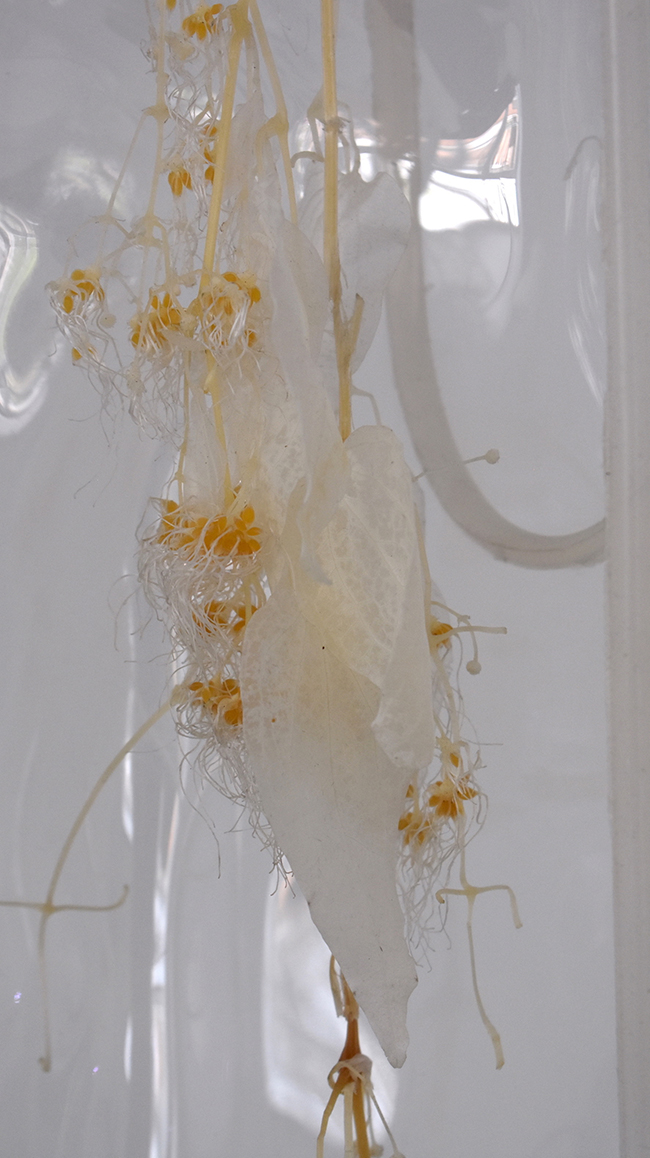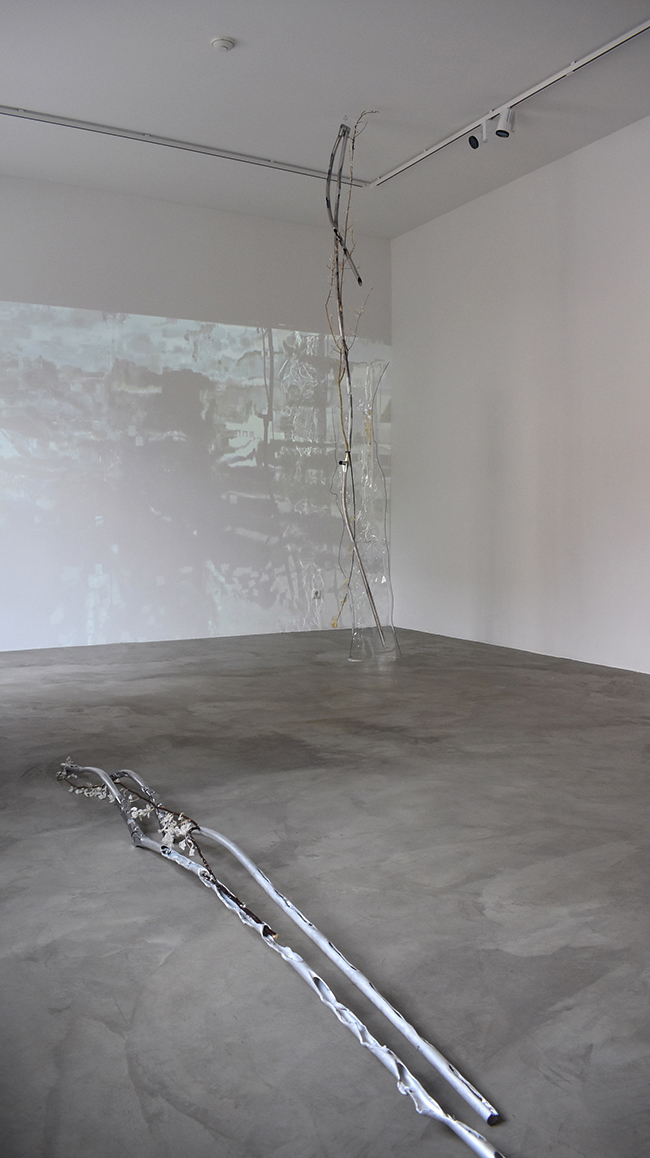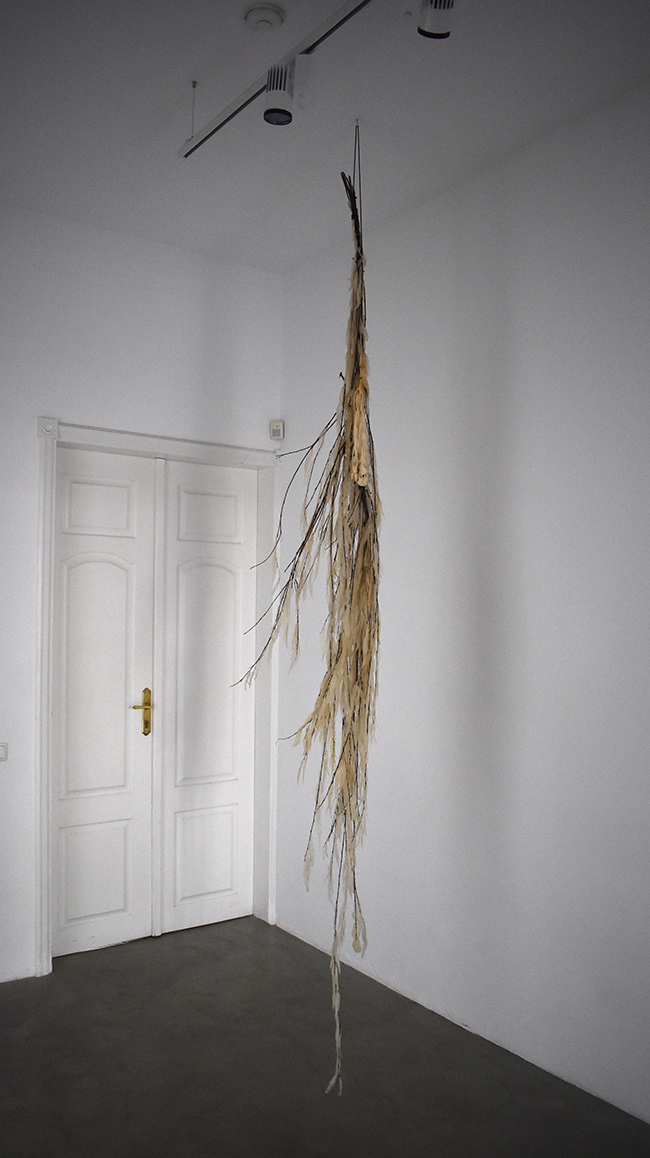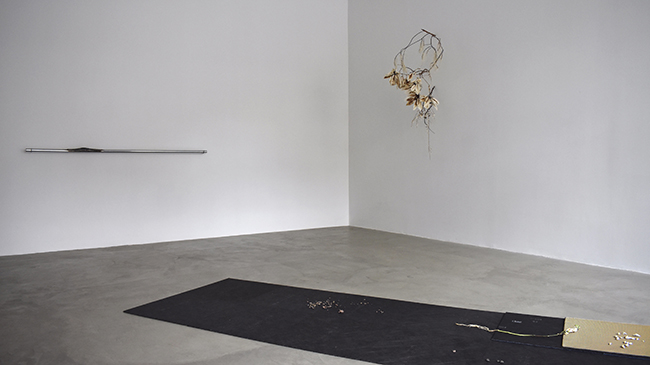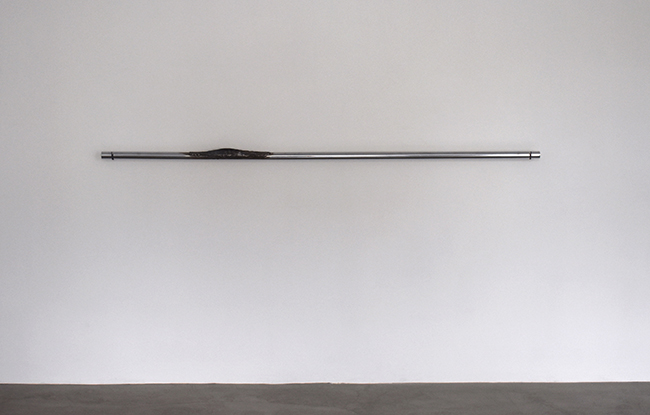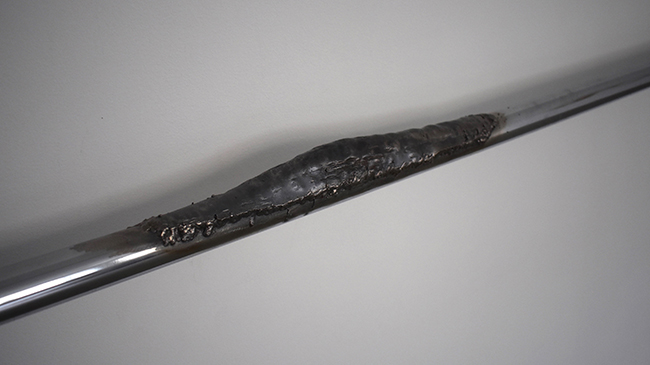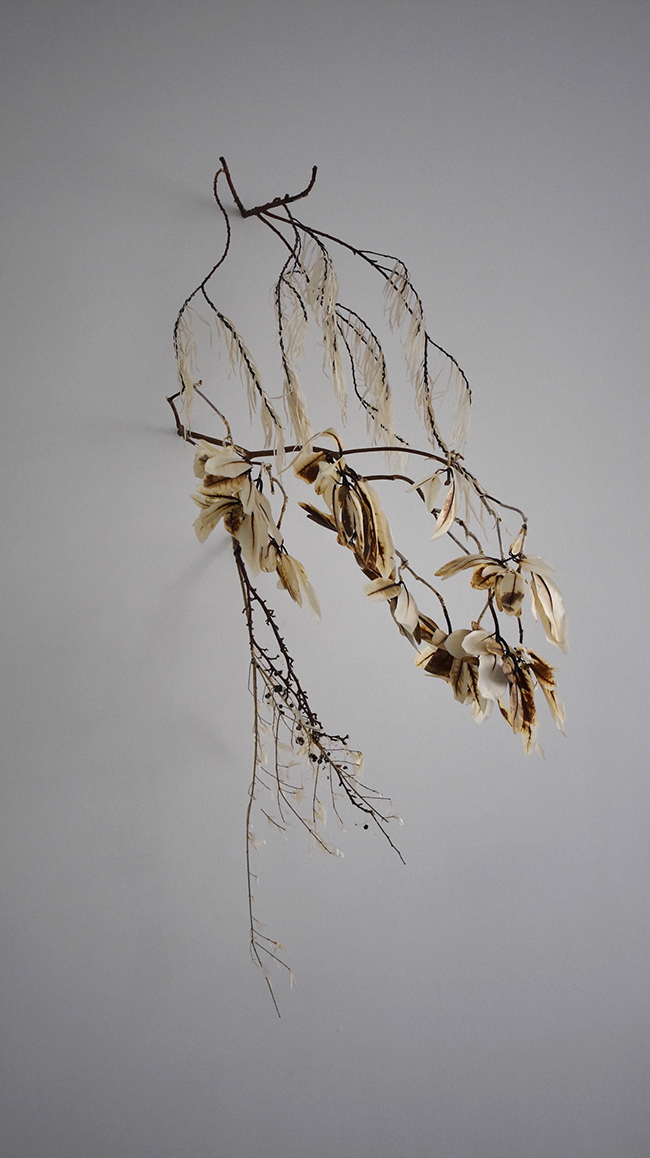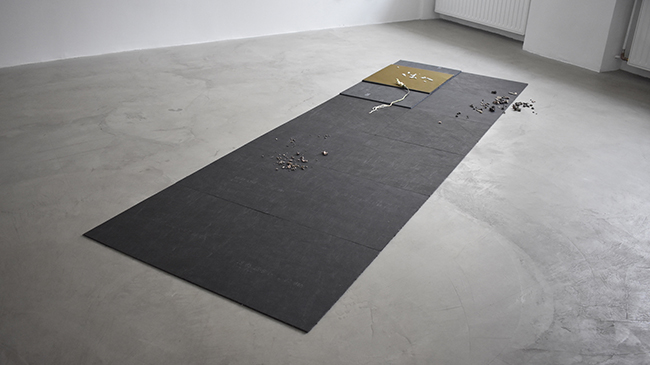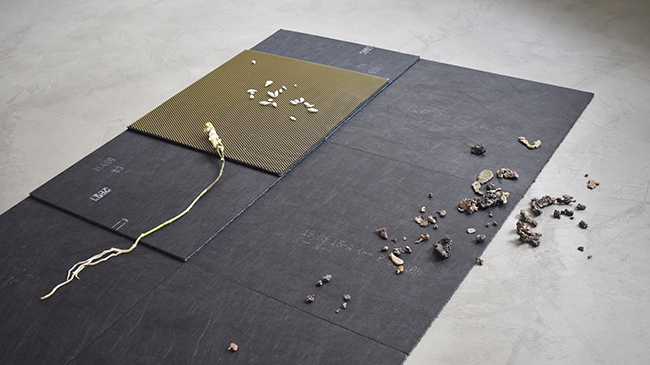
Within the atmosphere of thoughts
Express interview with artist Luca Vanello
18/06/2019
From 14 May until 22 June, the (AV17) Gallery in Vilnius is hosting the solo show Moist Muscles Await by Italian-Slovene artist Luca Vanello.
“Humanity’s relentless attempts to control time and this way achieve immortality are reflected in Vanello’s long-term research. The objects exhibited in Moist Muscles Await can be defined as abstract sculptural processes and results of various physical manipulations, emancipated from any kind of symbolism. Functioning as an ecosystem, they escape the anthropocentric vision of the world and enable us to take a fragmental look at the precariousness of existence,” says the annotation at the gallery. By combining various materials and media, Vanello has reflected on his inner beliefs about today and the temporality of existence per se.
Vanello works between Berlin and Brussels and has had eighteen solo exhibitions in Italy, Germany, Belgium, and other countries. In 2013 he was shortlisted for the Schulz-Stübner Preis and in 2015 for the Adrian Carruthers Award. In 2017 Vanello was nominated for the Brachum Kunstpreis.
This project is supported by the Kaunas Logistics Agency and the Italian Cultural Institute in Vilnius.
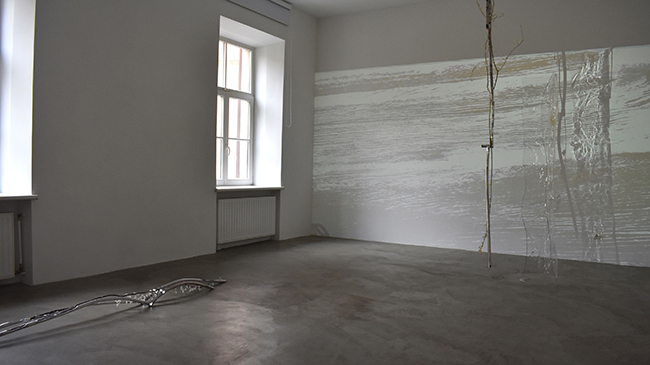
What is your exhibition Moist Muscles Await about?
The works in the exhibition explore the compenetration between the cycles of our existence and the cycles of the materials and other non-human entities that surround us. I am particularly interested in looking at our relation to “finality” and how the interaction with organic, digital and synthetic “things” plays a role in the process of acceptance, dealing and coping with finality.
In wanting to reflect on the inexorable human attempt to control time and its inevitable failure, I am interested in exploring sculptural processes as “editing” the time line of objects. In fact, processes such as the reversal of the materiality of an object back to its basic components, the acceleration of an oxidation or the pausing of a cycle become forms of sculpting that investigate the social, technological and biological implications of matter.
Functioning as an ecosystem, the work wishes to escape a human-centred vision of the world and enable us to take a fragmental look at the precariousness of existence.
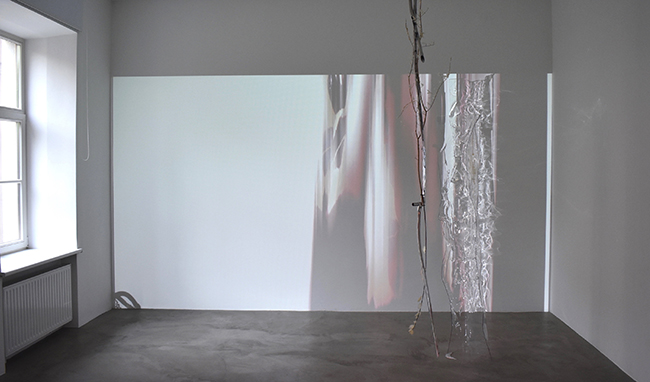
Are there any conceptual boundaries that you adhere to in your oeuvre?
I am very much fascinated and exited by recent propositions around the “agency” of non-human entities and a more inclusive and horizontal reading of our “reality” that exceeds the human point of view, as in the work of Karen Barad, Jane Bennett and Maria Puig de la Bellacasa. At the same time, these theoretical notions enter into dialogue with a more intimate and personal reading of matter.
Do you find it difficult to get started on a new project?
My process of making is very organic. I often make works thinking very much about the space where they will first be presented and what sort of atmosphere they will create on that occasion. The works that follow are a continuation, not a new project, and in this way they are able to communicate with each other. In fact, as I am very much interested in the idea of “adaptation”, I often exchange elements between different “finished” works as a way for the works to evolve, to transform themselves based on the demands of a new environment/exhibition space and on new possibilities of relating to the other works inhabiting the space.

You use different materials in your objects. By what principles do you choose them and how do you make these combinations?
The objects and materials that I choose to work with are always the result of specific research and are born out of collaborations with institutions or other organisations external to the art world.
For example, in one of the works in this show, plants from the waiting room of a traumatic stress service centre have been processed by removing their chlorophyll, thus creating a pause in their cycle. The aluminium and acrylic glass elements they are resting on are typical materials used in robotics. Aluminium is a material used in technological machinery because of its resistance to the effects of time, such as oxidation and decay. In the show, these elements have been manipulated, thus creating marks that could be scars or the start of an impossible decay. Finally, a projection appears at intervals in the space. The video was created by using an algorithm that allows written text to be inserted inside the binary code of a digital video, in this way creating a series of specific glitches based on the characteristics of the text. The original video consists of footage from a virtual reality simulation reenacting a traumatic event altered by inserting a found text of a child imagining her future.
All of these are specific narratives hidden behind the works. In fact, my wish is for the viewer to initially experience the work simply as matter emancipated from human projection, from any symbolism or direct way of reading. Only later is this information revealed in subtle ways, thus adding a new layer to the work.
Finally, through manipulation the selected synthetic materials start appearing as more organic, while the organic matter is mistaken for synthetic. It is at this point that they are merged together in hybrid assemblages, in this way wishing to blur their separation.
